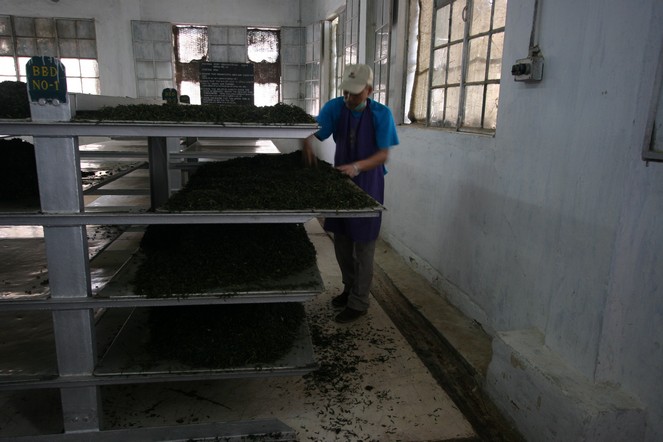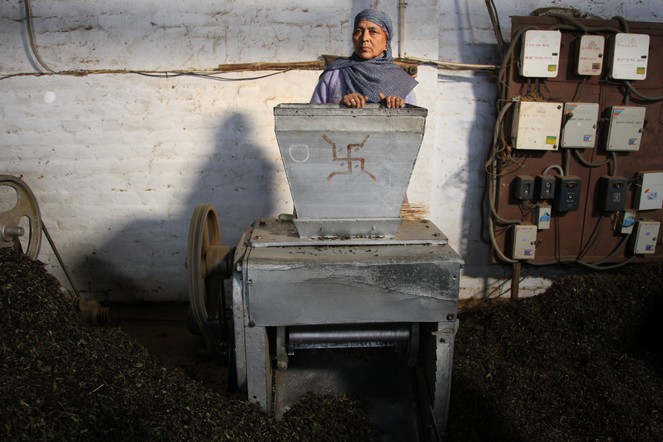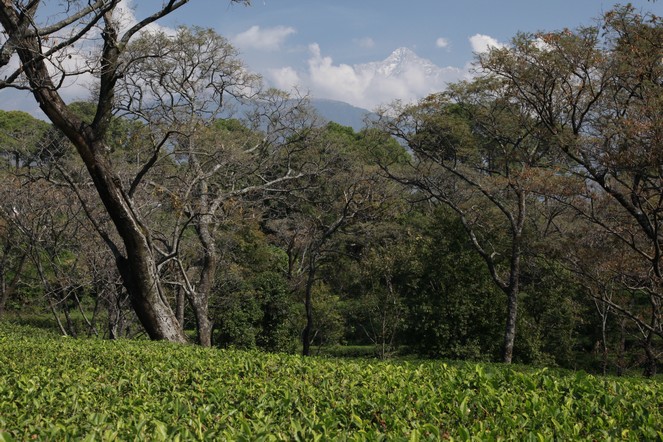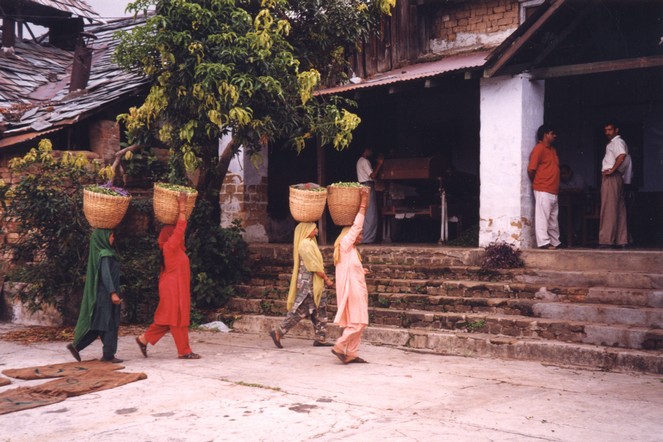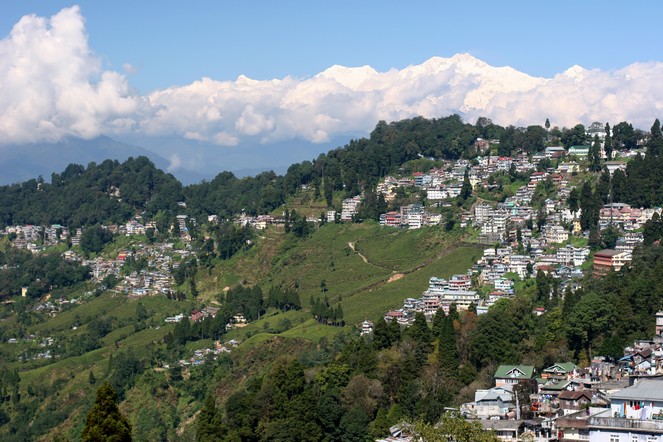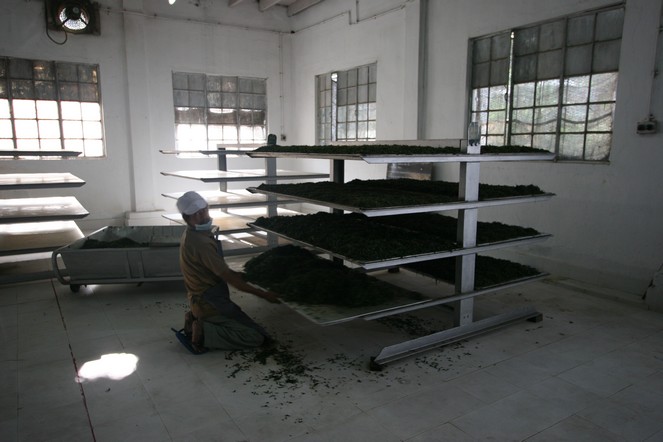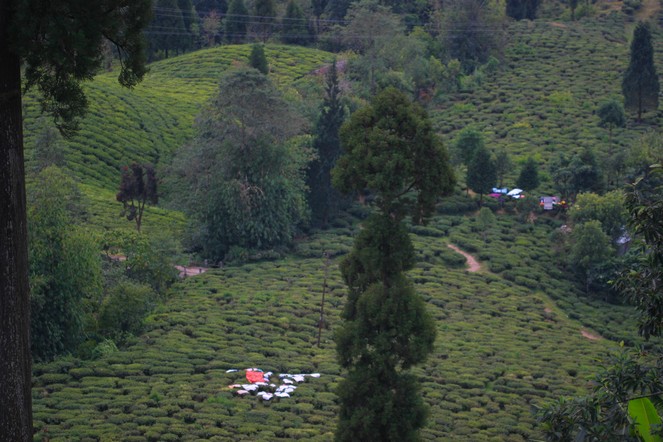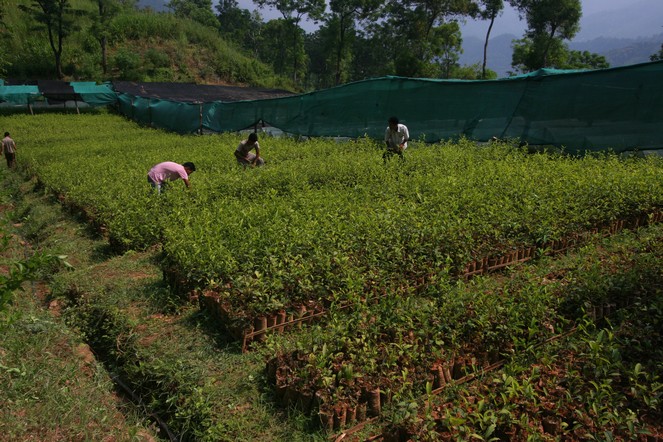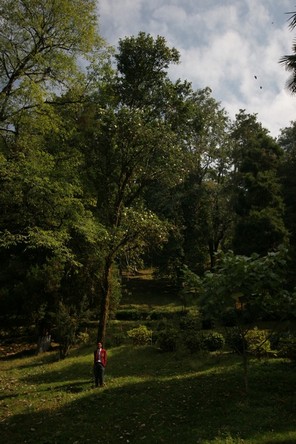During the oxidation process the tea leaves change colour, from green to brown. This only applies to black teas, of course.
Experience is everything when it comes to knowing when to end this stage. The factory manager must assess the colour of the leaves and their aroma, to decide if the tea has oxidised enough and it is time to dry it.
From plant to cup
Green particles in black tea
Sometimes you find green particles in black tea that are not the pale-green buds that often accompany a fine pluck.
The particles I’m talking about here come either from the rolling process, if the leaves get slightly broken, or when leaves that are a bit too big are put through a machine like this one, to make them smaller. Note the serious expression of this worker, who appears to blend in with her machine.
The Dhauladhar Mountains
The tea plantations in the Kangra region are dominated by a beautiful mountain range, the Dhauladhar. Its highest peak is 5,000 metres and it has cold winters that I don’t find unpleasant. This improves the quality of the spring harvest.
Trip to Himachal Pradesh (India)
I’m on my way to Dharamsala, Palampur and Baijnath, three towns in Himachal Pradesh (India). I haven’t visited this tea-producing region, near Kashmir, for 12 years.
The plantations in this region date back to the British colonial era; they are the same age as those of Darjeeling. In 1905, a terrible earthquake saw the settlers flee, but the plantations still exist.
The soil is as good as it is in Darjeeling, and the climate suits the tea plant, so it is time to see if the quality has improved in those parts, and whether we may at last one day taste fine teas from the region.
Darjeeling: the dream and the reality
This is a rather idyllic view of Darjeeling: a charming town with plenty of green space, spread out among the tea plantations in the Himalayan foothills.
The reality is more complex: the city has more than 100,000 inhabitants and spreads out much further than can be seen here. The roads are crumbling, all the city’s water has to be trucked in, and the traffic increases every year, making it very congested.
Tea Oxidation
Oxidation is an important stage in the process of making black tea.
It is not very easy to photograph as it consists of spreading out the tea on sheets in a fairly warm and humid atmosphere, then simply waiting for time to pass.
An interesting use for the tea plant
I don’t know how you usually dry your laundry. If you have a beautiful landscape in front of your house, like here, with tea plants on your doorstep, the bushes make an excellent structure on which to hang out your clothes. This method is adopted on many plantations.
It just goes to show how many uses there are for the tea plant.
The last autumn teas in Darjeeling
In a month’s time, the Darjeeling season will be over.
The temperature will drop and the tea plants will go dormant. Before then, a few autumn or “third flush” teas are still being produced, and there are other jobs to be getting on with, like here, at Delmas Bari, where the young shrubs are being tended to.
These ones are now big enough to leave the nursery and be planted out in the ground.
Century-old wild tea plants
You may have to drive for several days to see them. But you will also find a tea plant the size of a tree in Darjeeling, in the Botanic Gardens. It is the same age as the region’s tea plantations, nearly two hundred years old.
To give you an idea of its size, I asked someone measuring around 180cm to stand at its foot.
Expertise makes good tea
Because I visit the production regions regularly I am able to stay abreast of changes that take place on the plantations.
I’ll give you an example: today, a garden like Runglee Rungliot is completely unknown among the public, and justifiably so – it does not produce good tea.
But for things to change radically, all it needs is an experienced planter to come and work at the garden. The tea plants, the altitude, the orientation: this place has it all, and one day it will produce top quality teas.

